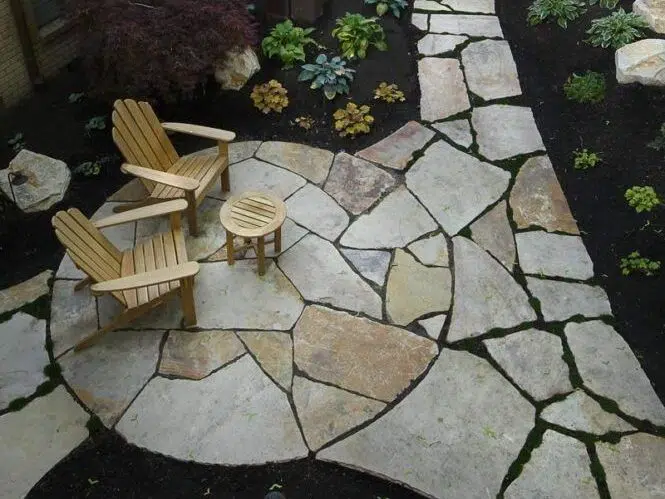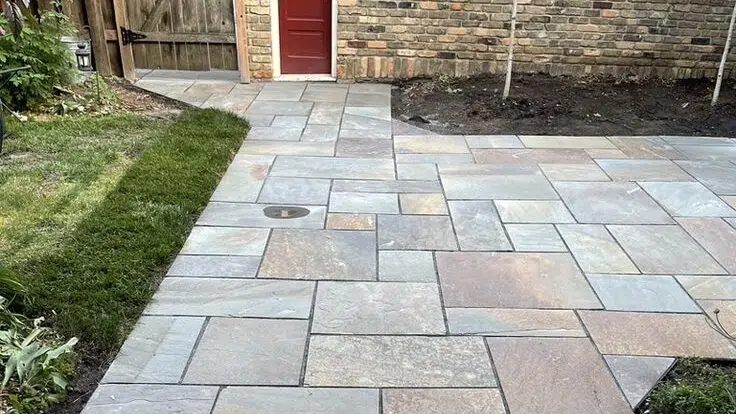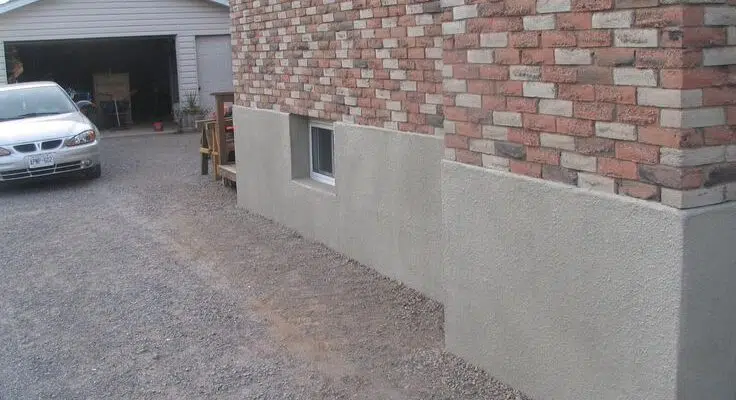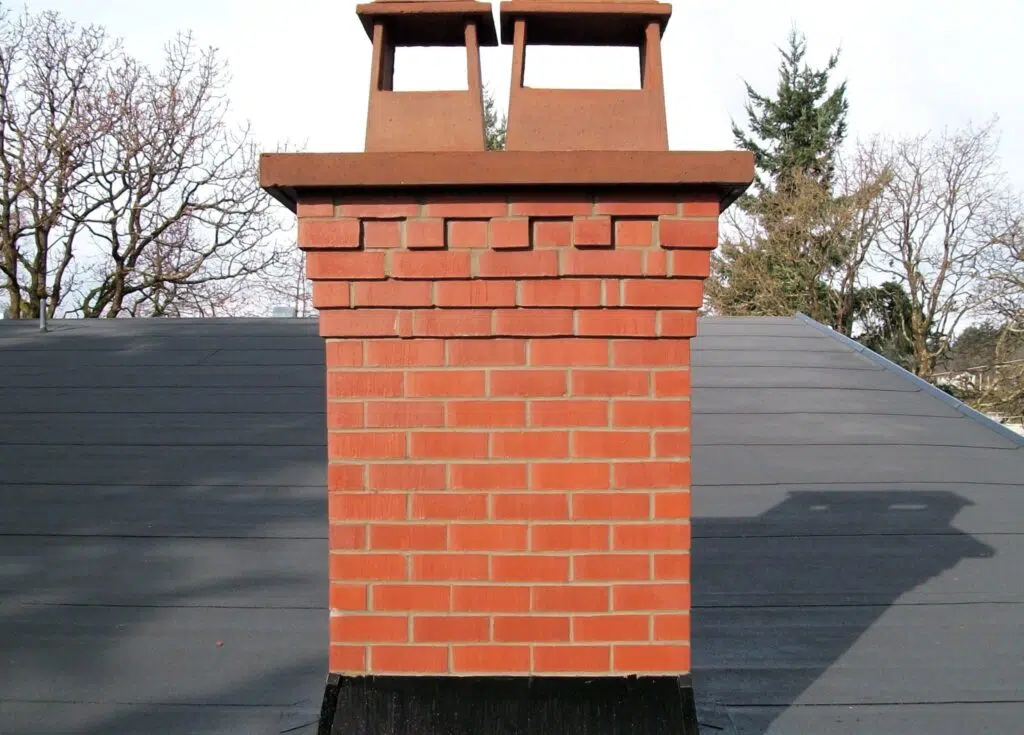Chimney Rebuilding: Introduction
Chimney restoration is important for your home. As it ages, so does its masonry. A professional mason can help match new materials to the initial design. Check the adjoining walls for any damage or clean-up that needs to be done.
Also, replace or restore any damaged flashing and vents. Inspect the chimney cap and flue for any damage or wear. Invest in good materials, like copper, for greater durability and a stylish look.
Preserve the unique style of your home by paying attention to details, like the chimney. This will help add value to your property and create a beautiful look. Make sure your home stands out – don’t settle for an average-looking chimney!

The Importance of Home Aesthetics
To keep your home looking stunning and to increase its value, preserve its charm with beautiful aesthetics. Focus on masonry, especially the chimney.
Choose materials that match your house’s style and age. Brick and stone for traditional homes. Concrete or stucco for modern ones.
Carry out regular maintenance and repairs. Don’t let water damage or structural problems occur. Consider a rebuild if the chimney is worn out.
Add wall cladding or painting for extra protection from the weather. And don’t forget to add decorative touches like lanterns and plants.
But remember – it’s not only about looks. It’s also about keeping Santa safe!
Chimney Rebuilding: Key Considerations
To ensure your home’s aesthetics and charm remain unchanged, you must consider chimney rebuilding with the right approach. Start with inspecting your chimney, obtaining the necessary permits, and choosing the right masonry contractor. In this section, we will guide you on these critical considerations for successful chimney rebuilding.
Chimney Inspection
Before any renovations, a thorough examination of the chimney’s structure, safety and functionality is highly recommended. This means inspecting the internal layer, evaluating the external layer, assessing the chimney cap and flue, as well as checking for blockage.
When inspecting, make sure to note the mortar joints, crown damage, flashing conditions, masonry work and other relevant factors.
It is essential to understand that improper chimney construction can lead to serious consequences. Therefore, taking time to assess all elements of the chimney’s interior and exterior layers is vital.
Historical chimneys often hold great cultural significance due to their age and architectural features. They can provide knowledge of certain cultures and building techniques from the past. Each renovation should respect this and attempt to preserve its glorious past.
Getting a permit for chimney rebuilding is not easy; otherwise, everyone would be up in smoke!
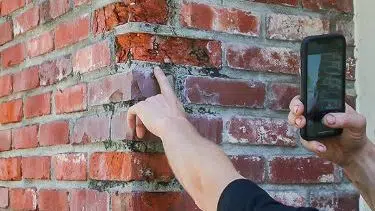
Chimney Rebuilding Permits
When planning to rebuild your chimney, it is essential to get permits from your local building department. These will guarantee your chimney is rebuilt with codes and regulations. Without these permits, fines or other penalties may occur.
To rebuild your chimney, choose a reputable contractor who specializes in masonry. Additionally, consider the materials used and make sure they’re high quality.
Depending on the extent of the rebuild, extra permits or inspections by a licensed professional may be needed. This includes inspections of the chimney foundation and any ventilation systems.
Pro Tip: Consult with a licensed professional before beginning any chimney rebuilding project. They can help you through the permit application process and make sure the project is done safely and correctly.
Choosing a Masonry Contractor
When it comes to masonry, be specific. Finding the right contractor is essential for your chimney project. Check experience, materials and safety measures.
Look for someone who puts safety first and takes precautions. Make sure they are licensed and insured.
Seek out expertise in chimney repair and clear communication throughout the project. Choose an experienced contractor who can execute your vision.
Don’t let delays or further damage threaten your home – choose a reputable masonry contractor now. Don’t try DIY – follow these steps and avoid a fiery fiasco.
Chimney Rebuilding: Step-by-Step Guide
To preserve the aesthetic appeal of your home, you may need to consider chimney rebuilding. With this step-by-step guide on chimney rebuilding, you can ensure that you achieve a successful outcome. From demolition to masonry repair and reconstruction, to chimney crown installation, this guide offers valuable insight on each sub-section.
Chimney Demolition
When reconstructing a chimney, safe removal of the existing structure is key. Planning, skilled laborers, and specialist equipment are necessary for safety and to avoid any damage.
Surveying the chimney’s condition is vital before starting. Check for risks like unstable materials and structural defects.
After a plan is drawn up, the team will begin the dismantling from the top down. Loose bricks will be carefully dislodged and taken down.
Once all of the old flue tiles have been removed, additional cleaning may be required before rebuilding.
Chimneys remain an important part of homes, even today. They manage smoke exhaust from fuel burning appliances like wood stoves. Fixing your masonry may not be glamorous, but it’s better than fixing a broken heart!
Masonry Repair and Reconstruction
When it comes to Masonry Repair and Reconstruction, it’s important to use a step-by-step guide for good results. An experienced mason needs to inspect the property before starting repairs or rebuilding.
Reconstruction includes building new brickwork, stone walls or pavements from the ground up. The mason may also suggest replacing old bricks with new ones. Repairs can include fixing cracks, chipped corners and gaps in the structure.
Every step must be carefully evaluated when doing Masonry Repair and Reconstruction. From surface preparation to mortar mixing and application, everything must follow the plan determined during inspection.
An example of this is an old building with severe brickwork damage due to bad weather. The mason-team followed the step-by-step guide carefully. This resulted in happy customers with a safe and secure chimney, able to withstand storms for years to come.
Install this chimney like a king – secure it from water damage in no time!
Chimney Crown Installation
The installation of a protective layer on the chimney is essential for its longevity. Here’s a quick guide on how to install a chimney crown:
- Evaluate the crown’s condition.
- Remove any cracked material.
- Cut the metal lath and attach it with adhesive.
- Spread a layer of mortar over the lath.
- Wait until the mortar dries before adding a second layer.
- Finish with a sealant for waterproofing.
Remember each chimney crown is different, so techniques for installation may vary depending on size and shape.
Also, remember to cover flue tiles when applying mortar to avoid clogging the vents.
Fun fact: 80% of chimney fires start from the buildup of creosote. So, if you’re going to build a chimney, make it stylish!
Finishing Touches: Chimney Aesthetics and Home Style
To preserve the look and style of your home, the Finishing Touches: Chimney Aesthetics and Home Style section provides you with solutions such as Custom Chimney Caps and Shrouds, Brick and Mortar Color Matching, and Chimney Crown Design. These sub-sections will help you enhance the beauty of your chimney and maintain the aesthetic value of your home.
Custom Chimney Caps and Shrouds
Customized Chimney Caps and Coverings provide an aesthetic boost to home design. They fit sleekly, protecting against weathering elements like rain, snow, sleet, and wind.
Plus, homeowners can choose between different styles and finishes, such as copper or stainless steel. Even a curved chimney top can be catered for – the team of experts measure every nook individually.
The final product is both functional and stylish. Finding the right color to match your bricks can be like searching for a needle in a haystack – except the needle is a specific shade of red!
Brick and Mortar Color Matching
Achieving an aesthetically pleasing finish requires matching the brick and mortar colors. This ensures a seamless blend with the house’s overall look.
Here’s a table of popular brick types and their corresponding mortar colors:
| Brick Type | Mortar Color |
|---|---|
| Red | Gray, Natural |
| Brown | Light Tan |
| Tan | Buff |
| Black | Gray |
| White | White |
Contrasting colors can also make a unique design element. For example, a red brick chimney with white or black mortar creates interesting lines.
Complementary colors also offer another option that can be better than direct matching. A beige chimney with gray mortar creates a balanced yet distinct appearance.
Homeowners should pay attention to these details to ensure their chimneys add value. Taking into account the style and exterior look of your house while choosing brick and mortar color can elevate the overall aesthetics of your home. Upgrade your home with a stylish chimney crown design!
Chimney Crown Design
Chimney Crown Style is a must for your home’s aesthetic. It looks great and protects your chimney from water damage. Here are the design options:
| Design Option | Description |
| Slab or Flat Concrete | Simple and budget-friendly. Not good for areas with snow or lots of rain. |
| Sloped Concrete | The crown slopes away from the flue, so water drains off well. Great for rainy places. |
| Metal | Strong and weather-proof. Looks great too. |
A Chimney Crown can also have a drip edge. This extra bit catches water and stops it running down the sides, which can cause erosion damage.
A Chimney Cap is a good idea too. It keeps out debris and looks great.
Choose a design carefully. Think about materials, location, weather & more. Get expert advice.
Making your home look amazing takes a lot of effort – without the reward of a paycheck at the end!
Maintenance and Upkeep: Preserving the Look and Style of Your Home
To preserve the look and style of your home, maintenance and upkeep are key. Chimney rebuilding is a crucial part of this process, and by keeping up with regular chimney inspections, chimney sweep services, and annual chimney cleaning, you can ensure that your chimney remains both functional and aesthetically pleasing.
Regular Chimney Inspections
It’s vital to remember that neglecting maintenance and inspections can result in serious issues like fires or carbon monoxide poisoning. So, schedule regular chimney inspections with licensed professionals to protect your family and home.
To keep your home in top shape, regular maintenance is key. One essential aspect of this is having your chimney inspected regularly. Professional inspections should be done at least once a year. They’ll check for cracks or damage that may cause a fire as well as any creosote buildup, which can be hazardous. Early detection of any necessary repairs can be taken care of quickly.
Maintaining your home is essential for preserving its structure, style, and aesthetic charm. Keep debris away from edges and pressure wash it every six months. Installing mesh shields over chimneys will prevent critters from entering and keep your ornate showcases intact. Plus, it’ll make inspection season go more smoothly. Keep your chimney clean and avoid any potential problems with our sweep services.
Chimney Sweep Services
Chimney sweep services are an important part of home maintenance. Cleaning chimneys regularly prevents fires caused by creosote and other flammable materials buildup.
- Chimney Sweeps assess structural damage that could be a potential hazard.
- They remove debris and blockages that could obstruct airflow.
- Cleaning creosote lowers the risk of chimney fires.
Keeping chimneys clean is necessary for safety and increasing home value. Neglecting chimneys can lead to dirt, soot, and even pests. This can cause health issues and a breeding ground for harmful bacteria. So, it’s important to get help from professionals.
Chimney sweeps have been around since the 18th century when homes used wood-burning stoves or fireplaces. They make sure homes stay safe by having professionals do regular checkups. A clean chimney brings joy and your house will thank you for it!
Annual Chimney Cleaning
It’s essential to keep your chimney in top condition. Professional chimney cleaning services can help remove soot, debris and blockages that could lead to carbon monoxide poisoning or house fires.
It’s recommended to clean your chimney annually to prevent the buildup of mineral deposits, smoke and flammable soot. Also, bird nests and other items that block airflow should be removed.
Call a reliable chimney sweep service for an annual inspection. This will reduce creosote accumulation, help fix common operational problems and prevent damage from winter storms.
In case of additional repairs, qualified technicians will provide reasonable solutions for top-notch maintenance. Not having regular chimney maintenance can lead to structural damage.
A friend had a scary experience when he found soot residues all over his living room walls. Luckily, he had an annual professional chimney sweeping service scheduled the following week – avoiding costly repairs.
Regular chimney maintenance will keep your home safe and comfy. So get your home smokin’ hot by rebuilding your chimney!
Conclusion: Inspiring Home Aesthetics Through Chimney Rebuilding
Make your home look amazing with chimney rebuilding. Bring back your chimney’s glory and upgrade your home’s style. Professional masonry techniques help you keep or bring back the original design.
Chimney rebuilding can give your house an amazing look. No matter if it’s classic, traditional or modern, professional masonry makes sure your chimney fits perfectly with the rest of your house. A strong chimney increases your home’s value and is a great eye-catcher for visitors.
To make sure your chimney is safe and working, inspect it regularly and take care of repairs before they become big. Plus, use different materials like bricks, stone veneer or stucco to add a unique touch that matches the existing features.
Home aesthetics are key in increasing value and personality to your property. Invest some time in taking care of these elements today.
Frequently Asked Questions
- Why should I consider chimney rebuilding for my home?
- A: Chimney rebuilding is essential for maintaining the safety and aesthetics of your home. A deteriorated chimney can pose a fire hazard and negatively impact the overall look of your property.
- Will my chimney look different after rebuilding?
- A: Not necessarily. A professional masonry contractor can use materials that match the existing look and style of your chimney, ensuring that it blends seamlessly with the rest of your home.
- How can I preserve the look and style of my home during chimney rebuilding?
- A: Work with a reputable and experienced masonry contractor who understands the importance of aesthetics and can select materials that match the existing look of your home. Communicate your concerns and preferences upfront to ensure the best possible outcome.
- How long does chimney rebuilding take?
- A: The timeline for chimney rebuilding depends on the extent of the damage and the scope of the project. A simple repair can be completed in a few days, while a complete rebuild may take several weeks.
- What types of materials can be used for chimney rebuilding?
- A: The most common materials for chimney rebuilding include brick, stone, and concrete. These options offer durability and long-lasting aesthetics that can enhance the overall look and value of your home.
- How can I maintain my chimney after rebuilding?
- A: Regular inspections and maintenance are key to preserving the look and function of your chimney. Hire a professional to clean and inspect your chimney annually, and address any issues promptly to prevent further damage and preserve the beauty of your home.



